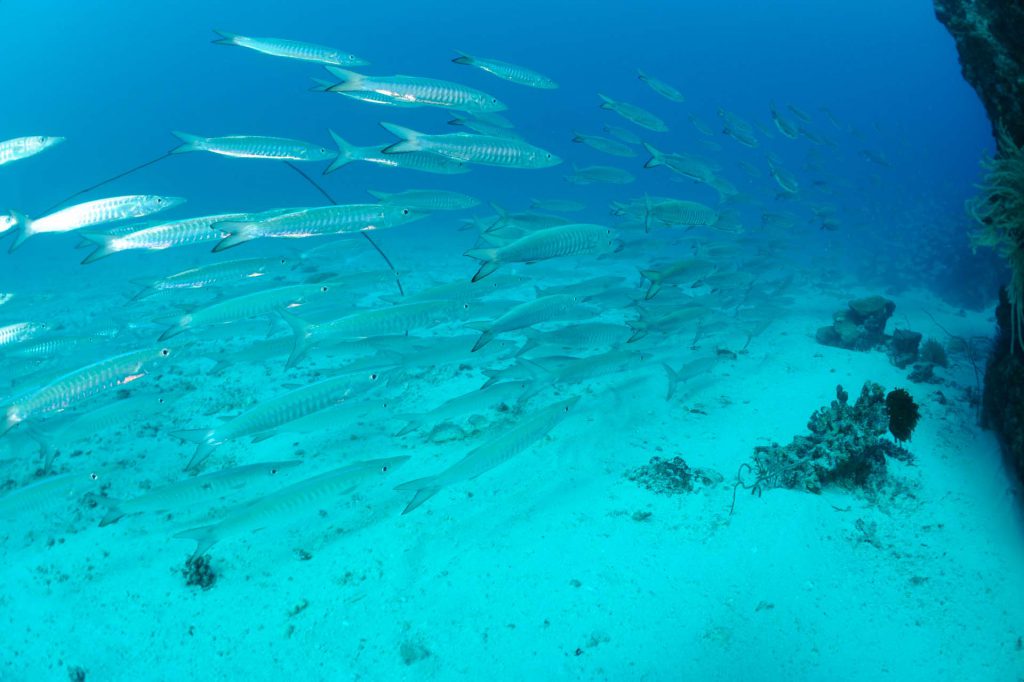Discovering the seabed of the Isle of Pines
For all seabed enthusiasts, diving remains a must-do on Pine Island, which has only one dive centre since 1974. The Kunie Scuba Centre is located 10 minutes away from the airport between the bays of Ouameo and Gadji, on the west coast.
The Kunie Scuba Centre started operating some 35 years ago under the casuarinas trees of a superb white sandy beach. The centre offers explorations all year round at some fifteen sites around the bay of Gadji, which is only about 30 minutes away by boat. Jean-Luc Beaufaron, the manager, is assisted by Nico, the territory’s only Kanak assistant, who has been working with him for 15 years. With over 2,000 dives and an in-depth knowledge of the seabed, he genuinely enjoys taking people to discover the hidden treasures of his native island, with a touch of humour and a few anecdotes. Nico is in a privileged position to encounter whales, sperm whales and killer whales under the water!
A flawless organization in heaven
Dives are generally organised in two-tank dives, i.e. two successive dives in the morning and afternoon outings on demand. The same applies for night dives, which are well known for their mysterious atmosphere in the company of nocturnal sea snakes. In the same spirit, dives in freshwater grottos are sometimes organised for divers who are also potholing enthusiasts. These dives take place in a 25m2 basin in which participants can dive for 30 minutes at up to 8 m deep.
Snorkelling outings are also organised on request and take place around the beautiful ‘mushroom islets’ in the bay of Gadji, which mirror in the celestial waters.
Respect the local
The Kunie centre is allowed to dive in the zone belonging to the Gadji tribe, which offers an array of diverse and sheltered sites that are accessible to divers of all levels. ‘However, to be allowed to dive outside this zone, one absolutely has to respect the custom,’ says Nico. The Kanak society is based on verbal exchanges and on the custom which consists in living and respecting the rituals in ceremonies that marks the important events in a person’s life. ‘One must go and see the island’s chief to make a request and ask him to accept some sort of offering, which is often composed of a “manou” (a piece of pareu fabric), cigarettes or tobacco and an XFP 1,000 note as a mark of respect,’ adds Nico, who is a member of the Gadji tribe. A customary observance that promotes dialogue and the respect of the interests of each and everyone all the while preserving the environment.
An Kanak island and proud of it
Even if it is a favourite among tourists from the world over for its unique landscapes and its legendary beaches, Pine Island remains Kanak land. The 2,000 inhabitants of Kunie are split into 8 tribes and are led by the Grand Chief of the island, who is also the mayor. The men of the village gather in a council in the hut of the Grand Chief to lengthily discuss any house or pirogue construction project or any important event. Three quarters of the inhabitants live in Vaoa, the only village on the island, in the middle of which sits a beautiful Anglican church.



